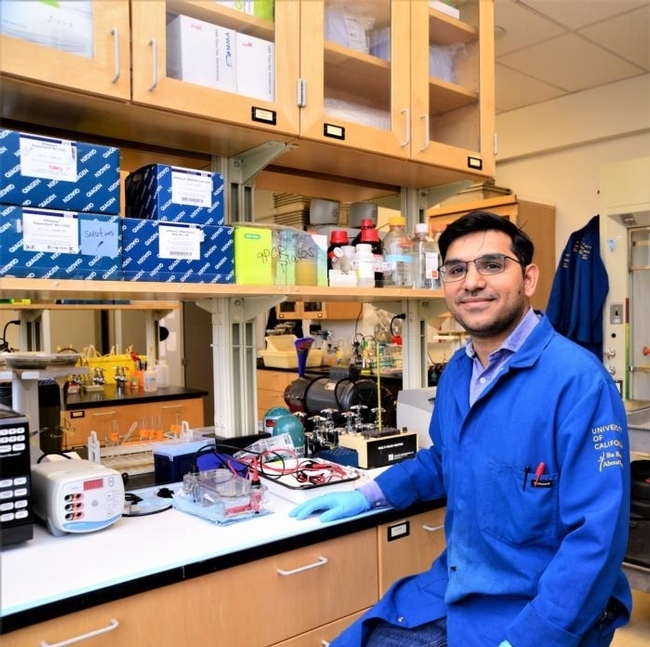- Author: Kathy Keatley Garvey
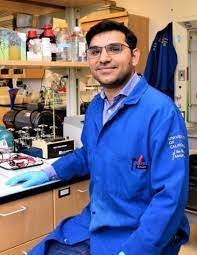
The fall quarter seminars begin Sept. 29 and conclude Dec. 1.
"The fall quarter series will be a mixture of in-person and virtual seminars and we have an exciting list of seminars that includes both national and international speakers," Siddique said. "Both in-person and virtual seminars will be held on Wednesdays at 4 p.m. (Pacific Time)."
The in-person seminars will take place in Room 122 of Briggs Hall. "We have already lined up seven speakers who will be giving in-person seminars," he said. Those will be recorded for later viewing.
Three of the seminars will be virtual. "Virtual seminars will be accomplished using the Zoom meeting software package," Siddique related. A Zoom link will be provided a week before the seminar.
First on tap will be the exit seminar of doctoral candidate Hanna Kahl of the lab of UC Davis distinguished professor Jay Rosenheim. She will speak on "Herbivory of Citrus Fruit by European Earwigs in California" at 4 p.m., Wednesday, Sept. 29. This will be an in-person seminar.
No seminar will be held Nov. 3, which conflicts with the annual meeting of the Entomological Society of America (ESA), set Oct. 31-Nov. 3 in Denver, Colo. Many faculty attend the annual meeting.
Siddique joined the UC Davis Department of Entomology and Nematology in July 2019 after serving as a research group leader for several years at the University of Bonn, Germany. Research in the Siddique lab focuses on basic as well as applied aspects of interaction between parasitic nematodes and their host plants. "The long-term object of our research is not only to enhance our understanding of molecular aspects of plant–nematode interaction but also to use this knowledge to provide new resources for reducing the impact of nematodes on crop plants in California."
For further information on the seminars, contact Siddique at ssiddique@ucdavis.edu.

- Author: Kathy Keatley Garvey
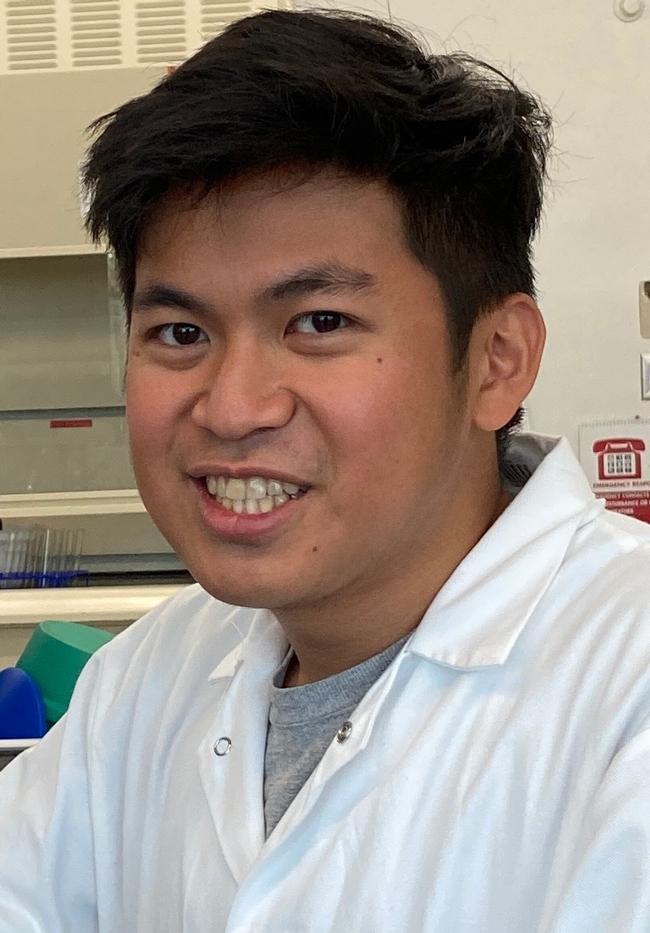
Sales, on track to receive his bachelor's degree in biotechnology (with an emphasis on plant biotechnology) in June 2022, submitted his successful research application on “Toward a More Resistant Plant: Uncovering Plant Host Targets of Novel Plant Parasitic Nematode Effectors.” He is one of only four students to be awarded the summer fellowship.
“Ado is a highly gifted student with a strong interest in agriculture and plant biology,” said Siddique. “I have really enjoyed one-on-one interaction with Ado and I have observed him growing academically and intellectually. He has a level of maturity in his research, including contributing ideas for troubleshooting, that I had no hesitations about giving him the space to continue his project independently. The IIFH fellowship program will add to his personal and professional growth and contribute to the experience of first-generation immigrant students like himself.”
ILFH awards Undergraduate Research Center Fellowships (URC-IIFH) to faculty-guided undergraduate students who perform research related to food, agriculture and health. Each fellow receives a summer research stipend, and funds for travel and/or research supplies. The fellows also will participate in professional development and entrepreneurship training, including the on-campus Entrepreneurship Academy. They will present their research results at the annual IIFH Innovator Summit in spring 2022, with opportunities to participate in the UC Davis Little Bang poster competition and the Big Bang competition.
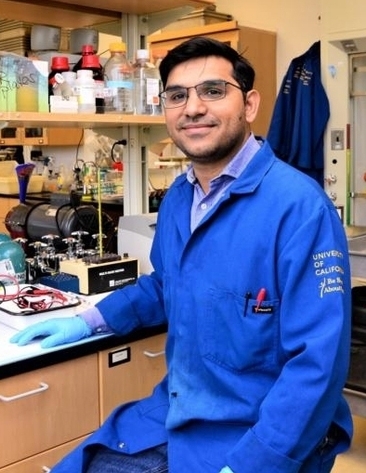
His research involves RNA extraction, cDNA synthesis, Polymerase Chain Reaction (PCR), and gel electrophoresis, as well as GreenGate Cloning of plant parasitic nematodes genes. His skills also include seed germination and nematode hatching for plant-nematode assays, and the microscopic evaluation of nematode damage on plants.
Sales' journey to the Siddique lab began in May 2019 when he was selected a research scholar in the campuswide program, Research Scholar in Insect Biology (RSPIB), launched by UC Davis Entomology and Nematology faculty Jay Rosenheim, Joanna Chiu and Louie Yang to provide undergraduates with a closely-mentored research experience in biology. Students join in their first or second year and are placed in a faculty mentor's laboratory where they receive ongoing training and career guidance in research and scientific writing. They also learn how to present their research results at professional scientific meetings and to prepare applications for graduate or professional schools.

When Sales learned that Rosenheim, a UC Davis distinguished professor of entomology, also co-leads RSPIB, “I knew that I should apply to this program to gain more research experience and valuable connections with professors in campus.”
Sales said he chose the Siddique lab because “I found his research impactful, engaging, and unique. As someone who has always been fascinated by agriculture and plant biotechnology, I found plant parasitic nematode research as an important field of research that is underestimated and unexplored. I wanted to be part of this research because I think I would have more room to grow as a researcher and a student.”
He initially worked in the Siddique lab with postdoctoral researcher Henok Yimer. “At first, I had zero lab experience and knowledge, so I had to be intentional and attentive when it came to following lab procedures and lab experiments such as PCR or gel electrophoresis. Gradually, I became familiar with the basic assays and techniques and when Fall 2020 came, I was given my very first independent research. My research involved the identification of plant host targets of plant parasitic nematode effector proteins using cloning and microscopy techniques.”
With assistance from Siddique, Sales learned of the URC-IIFH summer fellowship and submitted a research summary, innovation statement, and letters of recommendation. An interview followed. “I was fortunate to be awarded this fellowship,” he said, “and continue my research in Dr. Siddique's lab to learn and do competent research.”
Born and raised in Manila, the Philippines, Sales moved to the United States as a teen and is a graduate of Dougherty Valley High School, San Ramon. He serves as a student intern at the UC Davis Bulosan Center for Filipino Studies to help preserve the oral history of Filipino-Americans in the Greater Sacramento Area.
He is also vice president of the UC Davis French Club; a member of the Pilipinx Americans in Science and Engineering; and the UC Davis representative to the Cornell Institute for Digital Agriculture Hackathon, which explores what technology can do for agriculture.

- Author: Kathy Keatley Garvey
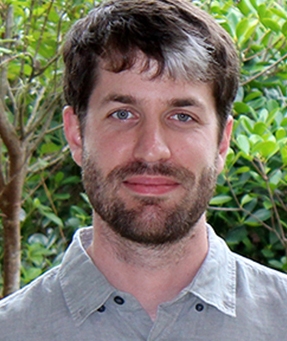
His seminar, titled "Gaps in Molecular Plant Nematology," is from 4:10 to 5 p.m. (Link to the form to join the Zoom meeting.)
"What has molecular plant nematology done for me?" asks DiGennaro, who will present a collection of short stories describing the need for, and benefits of, a symbiosis-centered approach in understanding plant-nematode interactions at the molecular level.
"Dr. DiGennaro does great work on plant-nematode interactions," said seminar host Shahid Siddique, assistant professor, UC Davis Department of Entomology and Nematology.
DiGennaro, interested in the molecular basis of nematode parasitism in plants, primarily researches the root-knot nematode (Meloidogyne spp.); specifically, he is concerned with nematode-derived signaling molecules and subsequent host responses. His lab utilizes an array of genomic, genetic and biochemical tools to understand the fundamental mechanisms behind nematode host range, parasitism, and plant responses.
"The goal of our research is to develop novel avenues for safe and sustainable nematode control strategies," he says.
DiGennaro received his bachelor of science degree in biochemstry in 2007 from the State University of New York at Geneseo, and his doctorate in functional genomics, with a minor in plant pathology, from North Carolina State University (NCSU) in 2013. At NCSU, he studied the molecular basis for nematode parasitism in plants. He served as a postdoctoral researcher with the Plant Nematode Genomics Group at both NCSU and at UC Berkeley before joining the University of Florida, Gainsville, in July 2016.
Coordinating the seminars is Cooperative Extension specialist Ian Grettenberger, assistant professor, UC Davis Department of Entomology and Nematology. For any technical issues, he can be contacted at imgrettenberger@ucdavis.edu.
- Author: Kathy Keatley Garvey
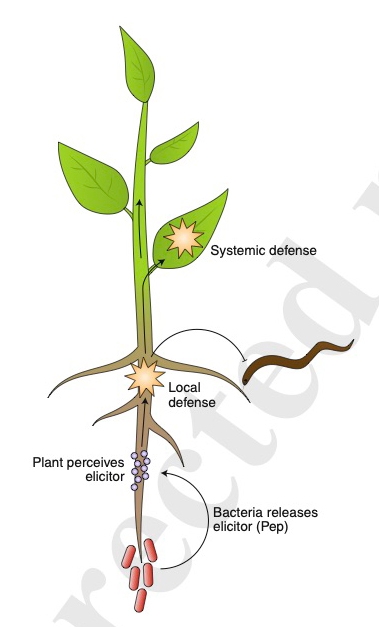
“Most current control methods rely on chemical nematicides, but their use is increasingly limited due to environmental concerns,” wrote Siddique and colleague Clarissa Hiltl of the University of Bonn, Germany, in a newly published News and Views column, “New Allies to Fight Worms,” in the scientific journal Nature Plants.
In commenting on Washington State University (WSU) research published in the same edition, they wrote that the proposed alternative pest management strategy--naturally occurring molecules or plant elicitor peptides (Peps)—shows promise: “Engineering a naturally occurring rhizobacterium to deliver Peps to the plant root system offers a new opportunity in integrated pest management.”
It's better to build up the host plant's immune system rather than directly target the pathogen with chemical nematicides which “are highly toxic and have negative effects on the ecosystem,” declared Siddique, an assistant professor in the UC Davis Department of Entomology and Nematology.
“Plant-parasitic nematodes are among the world's most destructive plant pathogens, causing estimated annual losses of $8 billion to U.S. growers and of nearly $78 billion worldwide,” he said.
The root-knot nematode Meloidogyne chitwoodi is a noted pest of potato production in the Pacific Northwest. Idaho leads the nation in commercial potato production, followed by Washington. Oregon ranks fourth. California, which ranks eighth, grows potatoes year around due to its unique geography and climate.
In their article, Siddique and Hiltl analyzed research published by WSU Department of Pathology scientists Lei Zhang and Cynthia Gleason who demonstrated the effective use of Peps to combat root-knot nematodes in potato (Solanum tuberosum). The WSU scientists engineered a bacteria, Bacillus subtillis, to secrete the plant-defense elicitor peptide StPep1. Pre-treatment of potato roots “substantially reduced root galling, indicating that a bacterial secretion of a plant elicitor is an effective strategy for plant protection,” the Zhang-Gleason team wrote. (See article.)
Earlier scientists discovered that Peps could effectively manage nematodes in soybeans. Unlike the seed-grown soybeans, however, potatoes grow from small cubes of potatoes known as seed potatoes.
“Besides chemical nematicides, methods of nematode management include the use of crop rotation, microbial biocontrol agents, cover crops, trap crops, soil solarization, fumigation and resistant plant varieties,” wrote Siddique and Hiltl. “However, several of these strategies are not effective or available for all crops. Nematicides are highly toxic, and their use is strictly limited due to environmental concerns. Resistant plants are often ineffective or unavailable. Microbial biocontrol agents have produced inconsistent results. In this context, the current work provides a new opportunity to manage plant-parasitic nematodes by combining two progressive strategies: the use of plant elicitors to enhance crop resistance to pathogens and the use of B. subtilis to deliver.”
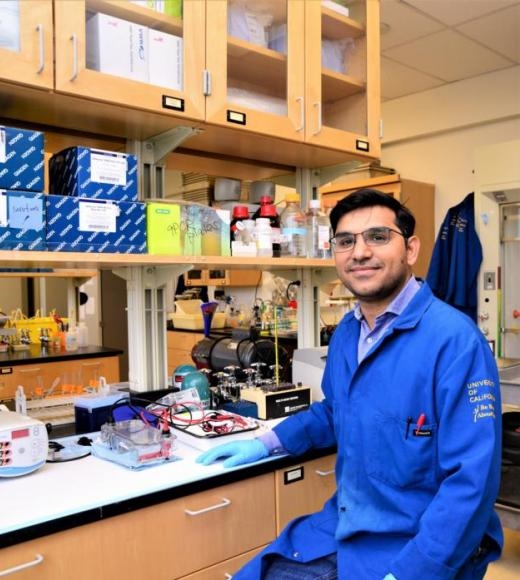
- Author: Kathy Keatley Garvey
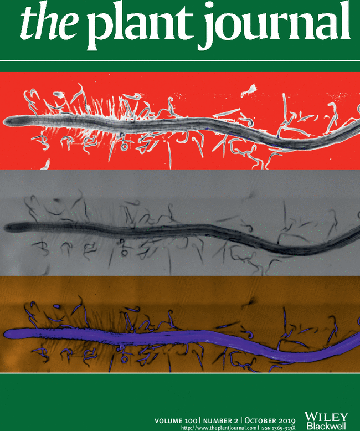
Research Highlight Editor Lysa Maron spotlighted the work in her article, “Breaking or Sneaking into the Fortress: the Root Endodermis is a Defence Wall Against Nematode Infection.” The journal also showcased the research team's image of a nematode on the cover.
Siddique led the 10-member international research team in discovering the role of a plant's endodermal barrier system in defending against plant-parasitic nematodes. The Plant Journal published the research, “Root Endodermal Barrier System Contributes to Defence against Plant‐Parasitic Cyst and Root-Knot Nematodes, in its July 19 edition.
“We discovered that the integrity of the endodermis—a specialized cell layer that surrounds the vascular system and helps regulate the flow of water, ions and minerals--is important to restrict nematode infection,” said Siddique, an assistant professor in the UC Davis Department of Nematology who joined the faculty in March after serving several years at the University of Bonn.
“We found that having defects in endodermis make it easier for parasites to reach the vascular cylinder and establish their feeding site. Although, this finding is a result of basic research, it opens new avenues to for breeding resistance against cyst nematodes in crops.”
Maron noted that “Roots are a truly amazing plant structure: they conquer the underground, form complex structures that anchor the plant, let water and nutrients in, but must not dry out. Roots store energy, send signals to the aboveground parts of the plant and to neighbors, and defend the plant against soil-borne pathogens. Within the root, the endodermis is the barrier that separates the inner vasculature from the outer cortex. If the root is a fortress, the endodermis is the gated wall. Cell wall reinforcements such as the casparian strip (CS), lignin deposition, and suberin seal the apoplast of the endodermis throughout different parts of the root. These reinforcements allow the diffusion of water and nutrients to and from the vascular tissue while blocking its penetration by pathogens such as bacteria and fungi (Enstone et al., 2002).”
“But roots also face pathogens of a different kind: root-infecting, sedentary endoparasites such as cyst nematodes (CNs) and root-knot nematodes (RKNs),” Maron wrote. “These pathogens infect a variety of important crops and cause significant yield losses (Savary et al., 2019).”
Maron quoted Siddique: “According to Siddique, investigating root traits that affect plant-nematode interactions is important for finding new strategies for plant protection. Screening for natural variation in suberin- and lignin-related traits might help identify and develop stronger fortresses, i.e., plants with enhanced resilience against pathogens, drought, and nutrient deficiency.”
Siddique collaborated with scientists from Germany, Switzerland and Poland: Julia Holbein, Rochus Franke, Lukas Schreiber and Florian M. W. Grundler of the University of Bonn; Peter Marhavy, Satosha Fujita, and Niko Geldner of the University of Lasuanne, Switzerland; and Miroslawa Górecka and Miroslaw Sobeczak of the Warsaw University of Life Sciences, Poland.
“Plant-parasitic nematodes are among the most destructive plant pathogens, causing agricultural losses amounting to $80 billion annually in the United States,” said Siddique in an earlier news story. “They invade the roots of almond, tomato, beets, potato or soybeans and migrate through different tissues to reach the central part—the vascular cylinder--of the root where they induce permanent feeding sites.”
“These feeding sites are full of sugars and amino acids and provide the parasite all the nutrients they need,” Siddique explained. “A specialized cell layer called the endodermis surrounds the vascular system and helps regulates the flow of water, ions and minerals into and out of it. However, the role of endodermis in protecting the vascular system against invaders such as nematodes had remained unknown.”
The research was funded by a grant from the German Research Foundation.
